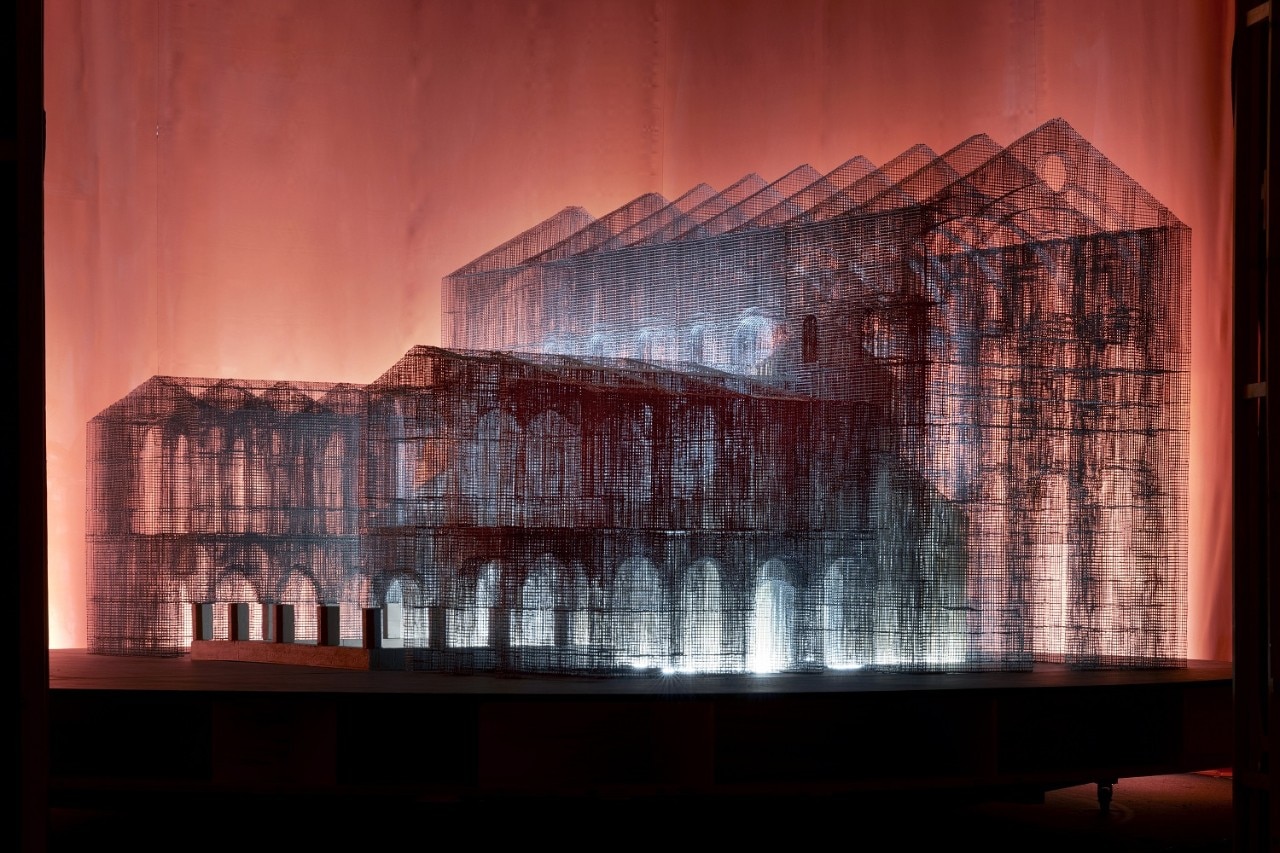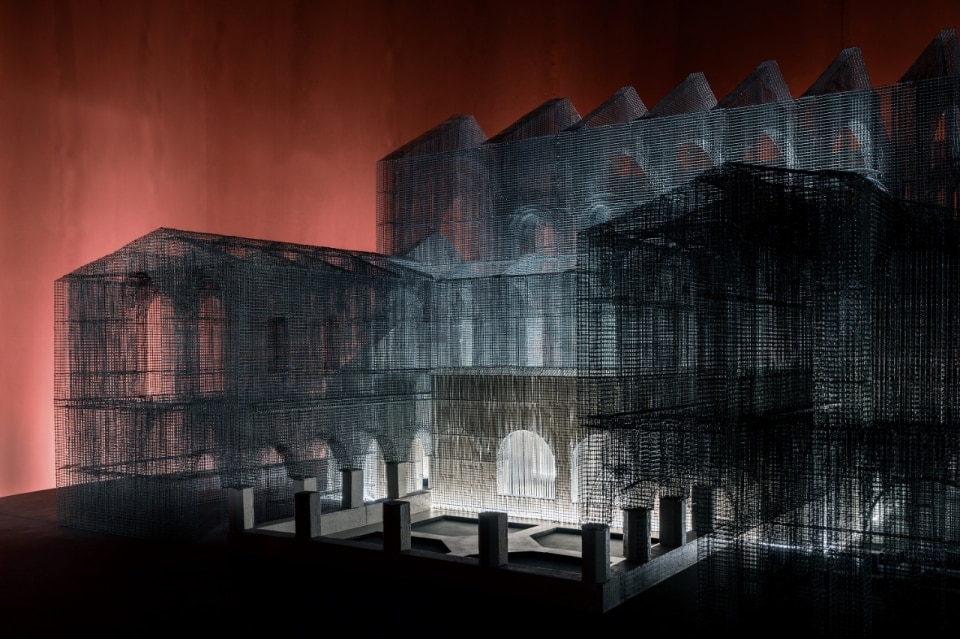The archaeological site of San Pietro, in Bari’s old town, is marked by a historical and urban narrative that stretches back thousands of years. From the Bronze Age through the Roman era, the Middle Ages, and into the 20th century, San Pietro has undergone numerous phases of life, function, and structural transformations, making it a richly stratified and complex context. Today, approaching the site, the eye is drawn to a new addition in this millennia-old landmark: the transparent outlines and soaring profiles of Edoardo Tresoldi’s monumental installation, slowly emerging from among the ruins in the most ancient heart of the city.
The project – recently unveiled in scale model form at the church of San Francesco della Scarpa – aims to make legible the historical and architectural metamorphoses that have defined the area, recently brought to light by a detailed archaeological campaign that reconstructed its different construction phases with precision. Tresoldi’s work tackles the theme of memory not through a literal reconstruction, but rather through an evocative gesture, one that seeks to root itself in the collective imagination of Bari’s residents and return to them a vital piece of their identity.
The expressive language adopted by the artist echoes the approach successfully tested in 2016 at Siponto: a mesh of metal wire that plays with transparency, shaping a composition of volumes that traces in the air the passing of time and identities, offering a three-dimensional image of the cultural and collective stratification of the San Pietro complex. Unlike the more ethereal structures, however, the inner walls of the oldest church will take on a tangible form through the use of inert materials salvaged from the demolition of urban buildings in the Bari area, creating both a temporal and physical continuity with the architectural heritage of the entire community.
“Here, matter has been made and unmade many times; each time a passage, a mutation. Each time, a human act leaving its mark. [...] To build, destroy, rebuild... like a breath. Layer upon layer, rooted in the same small patch of earth that, through the centuries and in different forms, has served as a house of worship, a place of ritual, a custodian of the sacred according to the people of the city”, explains Tripaldi. “To build San Pietro is an act that recurs, and somehow asks us: who are we? What do we value? What does the sacred mean to us? [...] This place, and the sculpture that will inhabit it, will become a dialogue between who we were and who we are now”.













